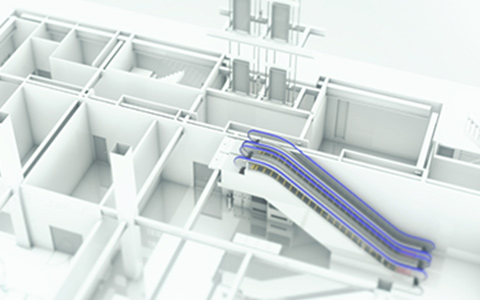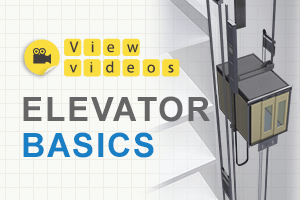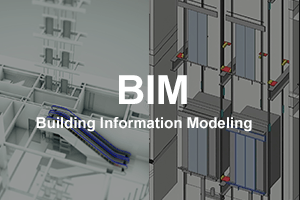BIMBIM:Terminology
#
3D
"Three dimensional." Solid geometry with width, depth, and height.
3D printer
Device which creates models and components using shape information regarding BIM models, etc.
4D
"Four-dimensional." Refers to the three spatial dimensions and scheduling (time).
5D
"Five-dimensional." Three dimensions + scheduling (time) + cost.
A - B
AR
"Augmented Reality."
Technology that virtually extends building spaces by overlaying virtual visual information (models, etc.) on top of them.
BIM
"Building Information Modeling."
The use of 3D models that possess attribute information in all stages of building lifecycles, including planning, design, construction and maintenance management.
For details, please refer to "Benefits of BIM".
BIM integrated model
Integrated model made from individual aesthetic design, structural, and equipment models.
Enables crash interference detection, which is the equivalent to the following later comprehensive model.
BIM model
The model is a model of the entire building. BIM 3D models are different from the conventional 3D models used to conceptualize buildings when creating visualizations in that elements are categorized abstractly and conceptually, and design information can be managed as data.
BIM model approval
Approval using BIM models alone, without 2D plans.
For details, please refer to "Examples of BIM integration".
BIM model consensus
Consensus formation regarding BIM models. At present, approval is performed using 2D figures.
For details, please refer to "Examples of BIM integration".
BIM parts
The construction materials and equipment purchased for construction projects and supplied by individual manufacturers.
These are not simply 3D parts, but have embedded in them information necessary for BIM design and construction, such as manufacturer name, model, price, specification restrictions, etc. BIM parts serve as the foundation for consensus formation, so they are linked to BIM model detailing and undergo intermittent maintenance until the BIM completion phase.
BIM tool
Software used to create, modify, and view BIM models. Also called "BIM software."
C - D
CAD
"Computer Aided Design/Drawing."
Drawings created using computers or the systems used to create those drawings.
CG
"Computer Graphics."
The technology for creating images using computers, or the images created using this technology. There are both 2D and 3G CG, but the CG used in architecture normally strives to produce photorealistic 3D images. "Perspective drawings" can be hand-drawn or created using CG.
Cloud
Servers on the internet used to share large files.
Construction BIM
BIM during the construction stage.
Crash detection
When construction materials occupy the same spaces before adjustment, this is called "interference." Interference detection consists of searching for locations where interference occurs.
Design BIM
BIM during the design stage.
Digital mock-up (DMU)
If shape information is digitized during design, it is easy to replicate virtual product shapes in virtual space on a computer and to create CG of them. It has been common to create full-sized models, or mock-ups, of industrial products such as automobiles during their development process. However, this takes both time and money, and was often a bottleneck in the product development process.
Digital mock-ups digitize this process with the aim of shortening production processes and dramatically reducing costs.
E - I
Export
This refers to the act of saving a file in a format that allows it to be read by other BIM tools and viewers.
Facility management
Facility management is often shortened to "FM." It is used to refer to maintenance and management of real estate, including buildings, and the specific methods used to perform this maintenance and management. It is also sometimes used more broadly to include building construction itself.
Maintenance and management costs now clearly exceed construction costs, making this an extremely important concept.
Family
This refers to BIM parts such as fittings and construction materials.
Depending on the software, "families" may also be referred to as "library components," "3D symbols," or the like.
Front-loading
Front-loading is placing emphasis on the initial processes when performing product manufacturing or development, thinking in advance about issues and problems which could occur in later processing and solving them before they occur.
Intermediary file
File format for exchanging data between different BIM tools. Common formats include IFC, DWG, DXF, and BE-Bridge. DWG is a native file format for AutoCAD, but it is often used as an intermediate file format. IFC is often used to pass both 3D shape data and attribute information together.
Import
This refers to the act of opening a file created by another tool.
IPD
"Integrated Project Delivery."
A method of carrying out projects in which clients, designers, and construction personnel from a team from the initial stages of the project and leverage their know-how. BIM is positioned as a tool for smoothly creating a collective.
J - O
JACIC
"Japan Construction Information Center."
This center uses information technology to further improve construction services, coordinate between government and the private sector, and play a role as a central organization in the shifting of the construction field to the use of IT.
Kick-off meeting
A meeting held by a contractor, in which construction specialist companies are invited, and notification is provided that BIM model usage will be initiated.
Lifecycle cost (LCC)
Lifecycle cost is used to refer to the total cost of a building over its entire lifecycle, including maintenance and management, improvement and repairs, and ultimate demolition and disposal, as opposed to the costs of building design and construction alone.
Building costs are often divided into the initial costs of constructing buildings and running costs of performing maintenance and management.
Running costs for buildings are larger than initial costs, so this concept is often used, for example, when pointing out that even if a building's initial costs are high, if the running costs can be lowered, the LCC will be lower.
LOD
"Level of Detail" or "Level of Development."
LOD indicates the level of detail of the BIM model. LOD200 is used to refer to basic design, LOD300 is used to refer to models for implementation design and confirmation application drawings, and LOD400 is used to refer to construction-level amounts of detail.
Native file
A file in the format natively used by a BIM tool.
P - Z
Platform
For 3D CAD and data to function as a platform means for them to function as a shared platform for the exchange of construction information.
Point cloud data
A collection of points with 3D coordinates produced by measurement equipment and/or image processing.
Properties
Properties are specification information input for 3D models of elements that make up buildings, such as walls, sashes, pillars, and the like.
Steel fabricator
Steel fabricators specialize in the processing and assembly of steel members in building construction and plants.
Visualization
Visualization refers to visually depicting something which cannot be seen or which is difficult to see.
It is one of the features and key benefits of BIMs.
VR
"Virtual Reality."
Collective term for technologies used to artificially create environments which are artificial by feel effectively real due to their effects on human sensory organs. Effects produced by devices worn on one’s body and video, audio, and the like synthesized by computer are used to project the user's body into a three-dimensional space, creating a feeling of immersion.











